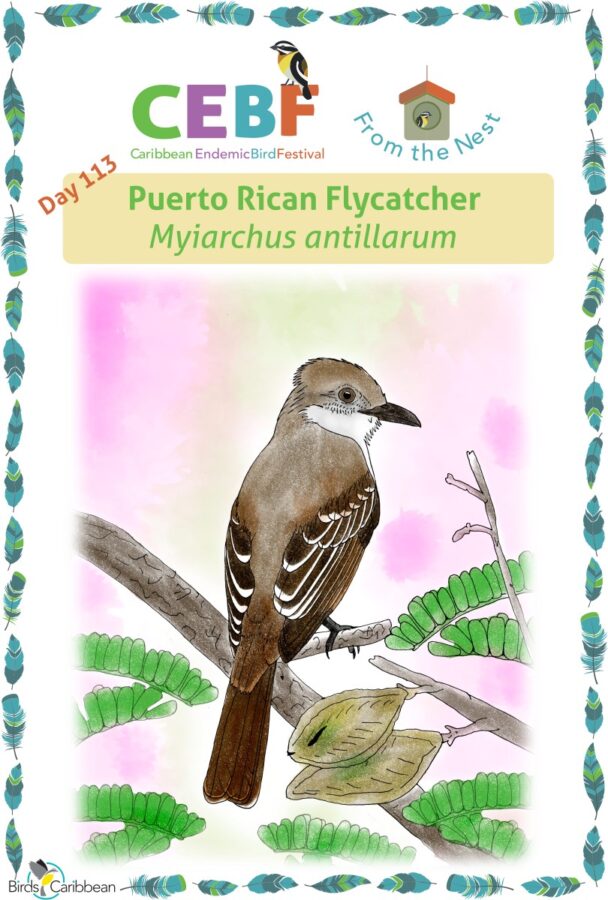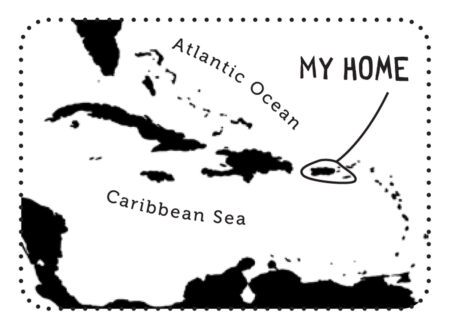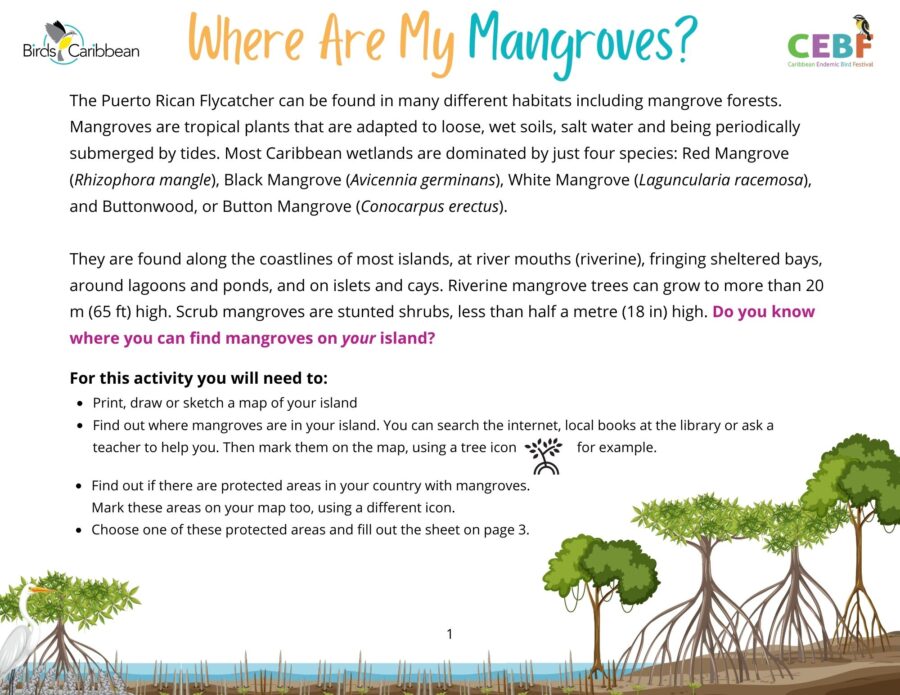Celebrate the Caribbean Endemic Bird Festival (CEBF) with us! Our theme in 2023 is “Water: Sustaining Bird Life,” highlighting the importance of water conservation to both humans and birds. Have fun learning about a new endemic bird every day. We have colouring pages, puzzles, activities, and more. Download for free and enjoy nature with your family at home.
Endemic Bird of the Day: Puerto Rican Flycatcher
The Puerto Rican Flycatcher (Myiarchus antillarum) is a medium-sized tyrant flycatcher, endemic to the island of Puerto Rico. It can be inconspicuous, due to its dull brown plumage on its back and mostly grayish-white underparts, but the voice of this elegant bird can be heard from a distance. The Spanish name “Juí” is derived from its characteristic whistled “wheeeeee” call. It also produces other distinctive calls throughout the day, like the quick “tsee-ick” whistle and longer dawn song “whee-a-wit-whee.”
Flycatchers can glean for insects from a substrate, but they mainly catch them in the air, flying out from a perch. This hunting strategy, known as “sallying,” requires acute vision and rapid movements! Its preferred diet consists of insects, like wasps, crickets, and beetles. But it also consumes a small amount of vertebrate prey, including snails and small lizards, and a few seeds and fruits.
The reproductive season extends from February to July. It nests in natural tree cavities, some previously built by Puerto Rican Woodpeckers (Melanerpes portoricensis). They are also known to use artificial nest boxes. Breeding biology studies have found that Shiny Cowbirds (Molothrus bonariensis) parasitize the nests of the Puerto Rican Flycatcher, thus decreasing their breeding success.
The species inhabits wooded areas, from coastal woodlands and mangroves at sea level to coffee plantations and mid-elevations montane forests. The species is not limited to the island of Puerto Rico; it is also found in the dry forests of the U.S. and British Virgin Islands, including St. John, Anegada, and Beef Island, although uncommon.
A long-term mist-netting study in Guánica State Forest in southern Puerto Rico, found a sharp decline in the flycatcher capture rate between 1989 and 2010. However, it is unknown if this trend extends island wide. For the moment, it is considered a species of Least Concern. Learn more about this species, including its range, photos, and calls here.
Thanks to Adrianne Tossas for the text!
Colour in the Puerto Rican Flycatcher
Download our West Indies Endemic Bird colouring page. Use the photos below as your guide, or you can look up pictures of the bird online or in a bird field guide if you have one. Share your coloured-in page with us by posting it online and tagging us @BirdsCaribbean #CEBFfromthenest
Listen to the calls of the Puerto Rican Flycatcher
The calls of the Puerto Rican Flycatcher are a short “tsee-ick” and a plaintive whistle “wheeeeee.” It also has longer dawn song “whee-a-wit-whee.”
Puzzle of the Day
Click on the image below to do the puzzle. You can make the puzzle as easy or as hard as you like – for example, 6, 8, or 12 pieces for young children, all the way up to 1,024 pieces for those that are up for a challenge!
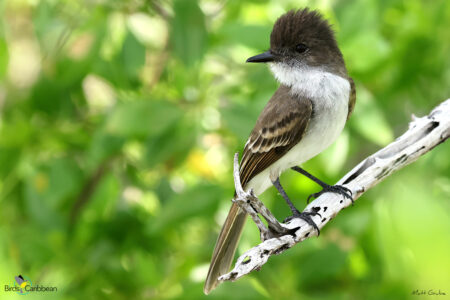
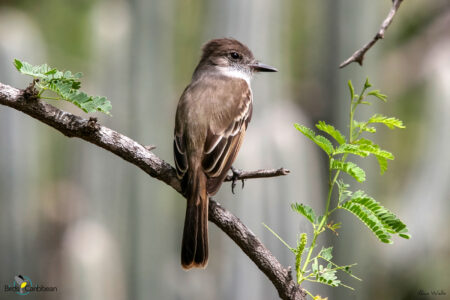
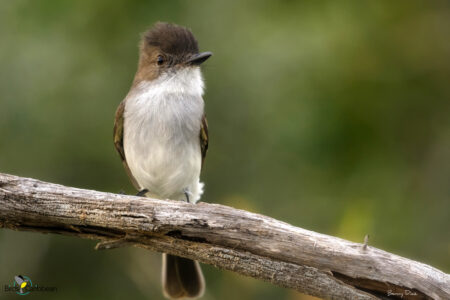
Activity of the Day
FOR KIDS: Puerto Rican Flycatchers can be found in many different habitats including mangrove forests. Mangroves are important for so many of our endemic, resident and migratory birds. They are also home to many other animals and plants. On top of all this mangrove provide protection against storm damage and floods! Do you know where the mangroves are on your island? Why not find out and complete our Where Are My Mangroves? activity.
FOR KIDS AND ADULTS: Enjoy this video of a Puerto Rican Flycatcher carrying nesting material to its nest, in an old pipe!

